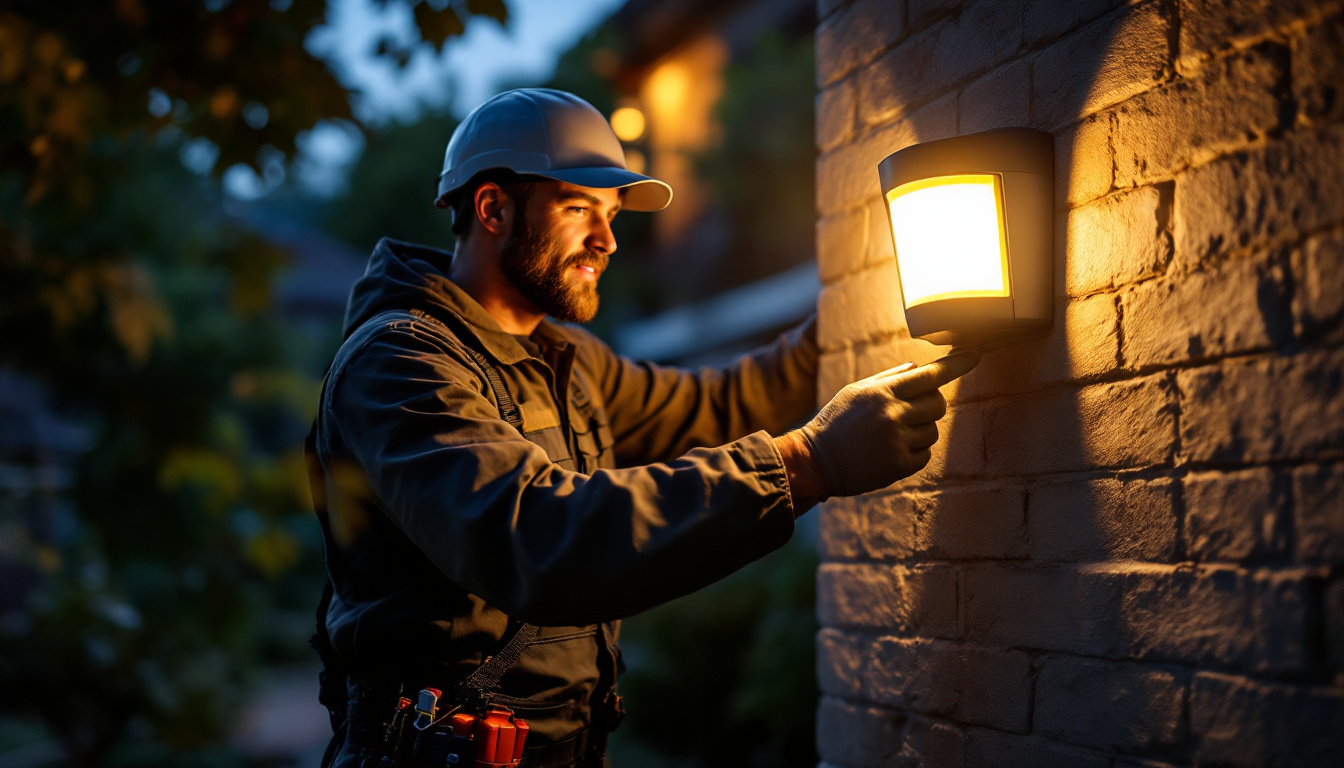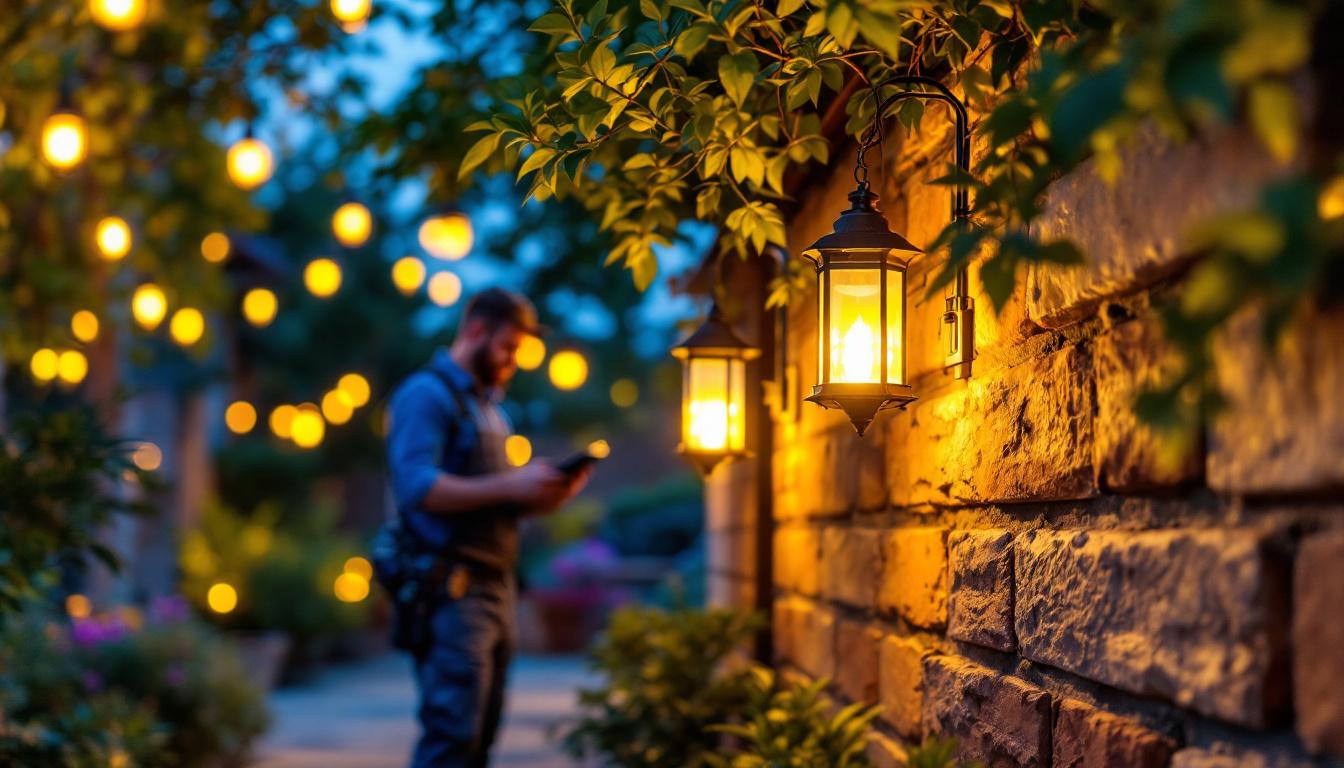
Outdoor motion sensor security lights have become increasingly popular in residential and commercial properties. These lights not only enhance security but also provide convenience and energy efficiency. By detecting movement, they illuminate areas only when needed, reducing unnecessary energy consumption and costs.
The technology behind motion sensors has evolved significantly, allowing for more precise detection and a broader range of applications. From simple on/off functions to advanced systems that can be integrated with home automation, the options available are vast. This evolution has created opportunities for lighting contractors to offer tailored solutions that meet the specific needs of their clients.
There are several types of motion sensors commonly used in outdoor lighting. Passive infrared (PIR) sensors are the most prevalent, detecting heat emitted by moving objects. These sensors are effective for residential applications, providing reliable performance at a reasonable cost.
Another type is the microwave sensor, which uses electromagnetic waves to detect motion. These sensors are more sensitive than PIR sensors and can cover larger areas, making them suitable for commercial properties. Additionally, dual technology sensors combine both PIR and microwave technologies to minimize false alarms, offering a more robust solution for security lighting.
One of the primary benefits of outdoor motion sensor security lights is enhanced safety. By illuminating dark areas when movement is detected, these lights deter potential intruders and provide a safer environment for residents and visitors. This proactive approach to security can significantly reduce the risk of break-ins and vandalism.
Moreover, motion sensor lights contribute to energy savings. Traditional outdoor lighting systems often remain on all night, leading to increased electricity bills. In contrast, motion sensor lights activate only when necessary, ensuring that energy is used efficiently. This feature not only benefits the environment but also appeals to cost-conscious clients.
In addition to safety and energy efficiency, outdoor motion sensor lights can also enhance the aesthetic appeal of a property. By strategically placing these lights along pathways, driveways, and entry points, homeowners can create a welcoming ambiance while improving visibility at night. Many modern designs come with adjustable brightness levels and color temperatures, allowing users to customize the lighting to suit their preferences and the architectural style of their home.
Furthermore, the integration of smart technology has revolutionized the functionality of motion sensor lights. Many models now offer features such as smartphone connectivity, enabling homeowners to monitor and control their lighting remotely. This capability not only adds convenience but also allows for real-time alerts when motion is detected, providing an additional layer of security. As technology continues to advance, the potential for outdoor motion sensor security lights to integrate with other smart home devices, such as cameras and alarms, will only increase, creating a comprehensive security ecosystem for users.
As the demand for outdoor motion sensor security lights grows, so does the need for skilled lighting contractors. The best contractors distinguish themselves through a combination of technical expertise, customer service, and innovative solutions. Understanding these qualities can help clients choose the right contractor for their lighting needs.
A top lighting contractor possesses in-depth knowledge of various lighting technologies, including the latest advancements in motion sensor systems. This expertise allows them to recommend the most suitable products for specific applications, ensuring optimal performance and efficiency.
Moreover, understanding local building codes and regulations is crucial. A knowledgeable contractor can navigate these requirements, ensuring that installations comply with safety standards and legal obligations. This attention to detail not only protects the client but also enhances the contractor’s reputation in the industry.
Customer service is a critical differentiator in the lighting contracting industry. The best contractors prioritize clear communication, ensuring that clients are informed throughout the entire process—from initial consultation to installation and beyond. This transparency fosters trust and confidence in the contractor’s abilities.
Additionally, top contractors offer personalized solutions tailored to the unique needs of each client. By taking the time to understand the client’s specific security concerns and preferences, they can design a lighting system that effectively meets those needs, enhancing overall satisfaction.
In a rapidly evolving industry, adaptability is essential. Leading lighting contractors stay abreast of emerging technologies and trends, allowing them to offer innovative solutions that enhance security and efficiency. This commitment to staying current not only benefits clients but also positions the contractor as a leader in the field.
Furthermore, the ability to integrate motion sensor lighting with smart home systems is becoming increasingly important. Contractors who can provide these advanced solutions will appeal to tech-savvy clients looking for comprehensive security systems that can be controlled remotely.
Selecting the appropriate motion sensor security lights involves several considerations. Clients should evaluate their specific needs, including the areas that require illumination, the level of security desired, and the budget available for the project. Understanding these factors will help guide the selection process.
Before choosing motion sensor lights, it is essential to assess the security needs of the property. High-risk areas, such as entry points and dark corners, may require more powerful lighting solutions or additional sensors to ensure comprehensive coverage. A thorough assessment can help identify vulnerabilities and inform the selection of the most effective lighting system.
Additionally, clients should consider the potential for false alarms. Some motion sensors are more prone to being triggered by pets or environmental factors, which can lead to unnecessary disturbances. Discussing these concerns with a knowledgeable contractor can help in selecting the right technology to minimize false triggers.
Energy efficiency is a significant consideration when selecting outdoor motion sensor security lights. Clients should look for products that feature LED technology, which offers longer lifespans and lower energy consumption compared to traditional incandescent bulbs. Additionally, selecting lights with adjustable sensitivity and duration settings can further enhance energy efficiency.
Contractors can assist clients in understanding the long-term cost savings associated with energy-efficient lighting solutions. By investing in quality products that reduce energy consumption, clients can enjoy lower utility bills while contributing to environmental sustainability.
Budget constraints are a common concern for many clients. While it may be tempting to choose the least expensive option, it is crucial to consider the long-term value of the investment. High-quality motion sensor lights may have a higher upfront cost but can save money over time through reduced energy usage and lower maintenance needs.
Additionally, clients should factor in installation costs when budgeting for their lighting project. A skilled contractor may charge more for their services, but their expertise can ensure a proper installation, reducing the likelihood of future issues and additional expenses.
Proper installation of outdoor motion sensor security lights is essential for maximizing their effectiveness. Lighting contractors should adhere to best practices to ensure that the systems function as intended and provide the desired security benefits.
The placement of motion sensors is critical for effective operation. Contractors should strategically position sensors to cover the most vulnerable areas of the property while minimizing the potential for false alarms. For instance, placing sensors at least 10 feet off the ground can help reduce the likelihood of being triggered by small animals.
Additionally, sensors should be directed toward areas that require illumination while avoiding direct exposure to sunlight, which can interfere with their functionality. A thorough site assessment can help determine the best locations for sensor placement, ensuring comprehensive coverage and optimal performance.
Proper wiring and power supply are essential for the reliable operation of motion sensor lights. Contractors should ensure that all wiring is installed according to local codes and standards to prevent potential hazards. Using weatherproof materials is also crucial for outdoor installations, as exposure to the elements can lead to electrical failures.
For clients looking to minimize energy consumption, incorporating solar-powered motion sensor lights can be an excellent option. These systems harness solar energy, reducing reliance on the electrical grid and providing a sustainable lighting solution.
After installation, thorough testing is essential to ensure that the motion sensor lights are functioning correctly. Contractors should verify that sensors are accurately detecting motion and that lights are illuminating as intended. This step can help identify any issues that may need to be addressed before the project is considered complete.
Furthermore, regular maintenance is vital for the longevity of motion sensor lighting systems. Contractors should educate clients on the importance of keeping sensors clean and free from obstructions, as dirt and debris can impede performance. Scheduling periodic check-ups can help ensure that the system continues to operate effectively over time.
Outdoor motion sensor security lights play a crucial role in enhancing safety and security for both residential and commercial properties. As the demand for these systems increases, lighting contractors have the opportunity to distinguish themselves through technical expertise, exceptional customer service, and innovative solutions.
By understanding the unique needs of clients and providing tailored recommendations, top contractors can build lasting relationships and establish themselves as trusted experts in the field. With proper installation and maintenance, motion sensor lighting systems can provide effective security solutions that stand the test of time.
Ultimately, the right choice in motion sensor security lights can transform a property, offering peace of mind and a welcoming environment. As the industry continues to evolve, lighting contractors who prioritize quality and customer satisfaction will remain at the forefront of this dynamic field.
Ready to elevate your lighting projects with the best in outdoor motion sensor security lights? At LumenWholesale, we provide lighting contractors like you with the highest quality, spec-grade lighting products at prices that can’t be beaten. Say goodbye to local distributor markups and hello to our extensive selection that meets the most stringent industry standards. Plus, with free shipping on bulk orders, you can stock up on premium lighting solutions without worrying about hidden fees. Don’t compromise on quality or value—choose LumenWholesale for lighting that combines excellence with affordability and convenience. Wholesale Lighting at the Best Value is just a click away.

Discover the key factors influencing the average cost of installing outdoor security motion sensor lights.

Discover how adopting lantern lights with LED technology can illuminate new business opportunities for lighting contractors.

Discover essential tips for lighting contractors to seamlessly install kitchen island light fixtures.

Discover the hidden techniques lighting contractors use to transform spaces with architectural lamps.